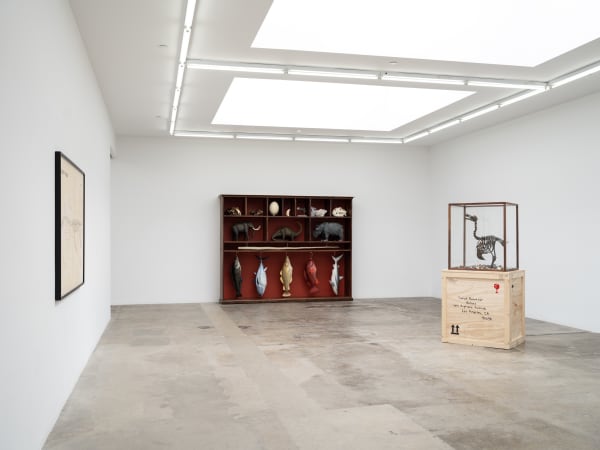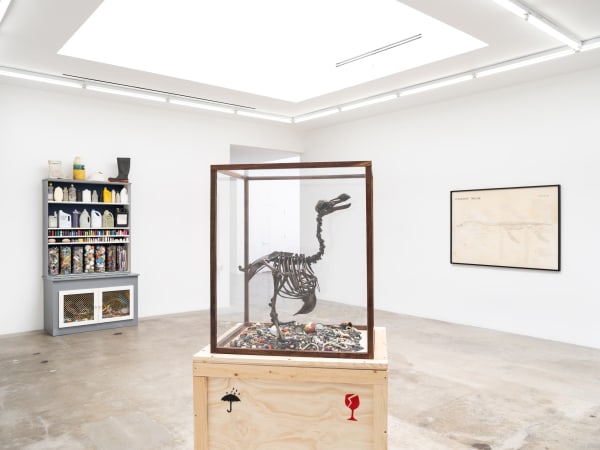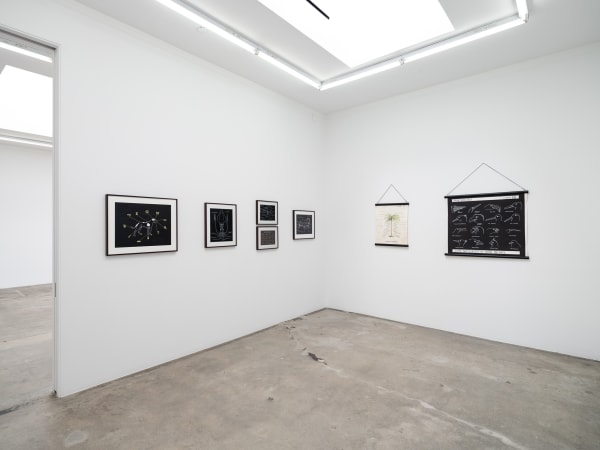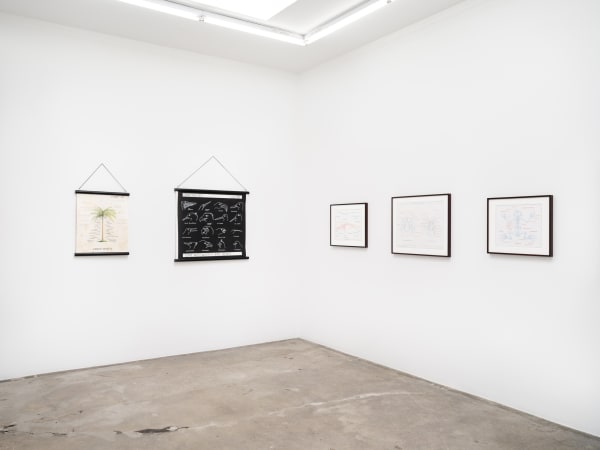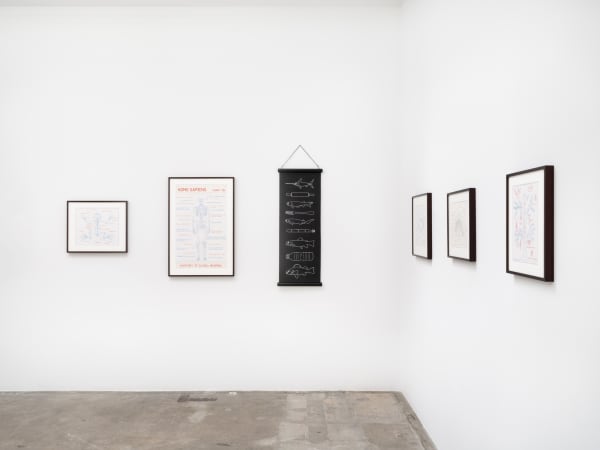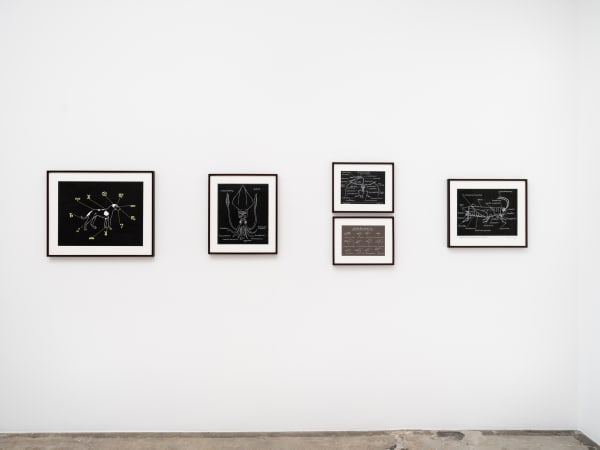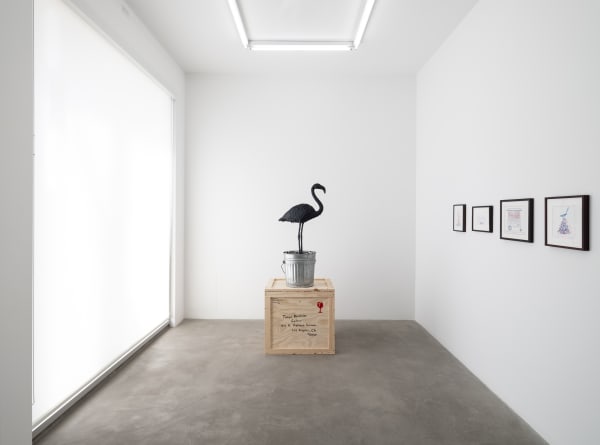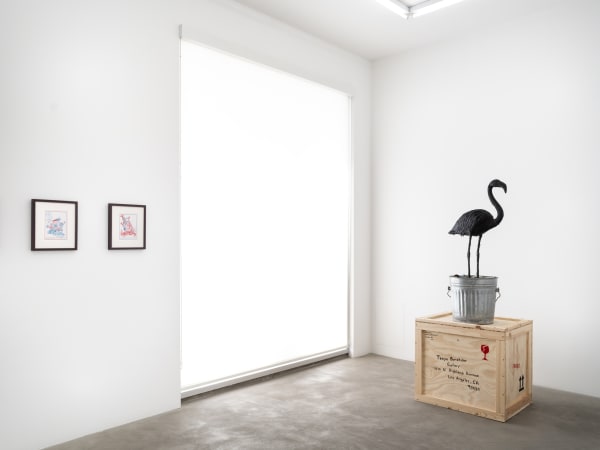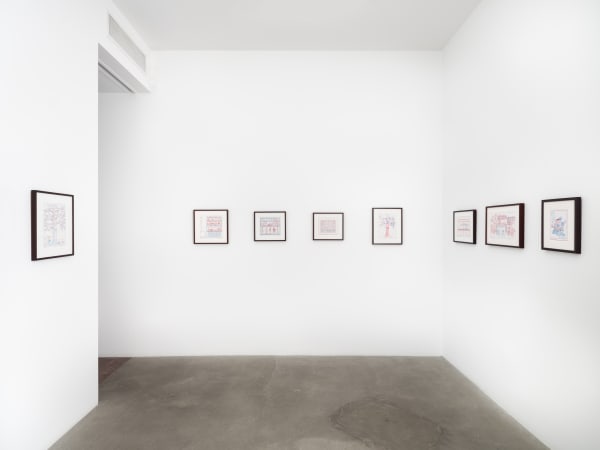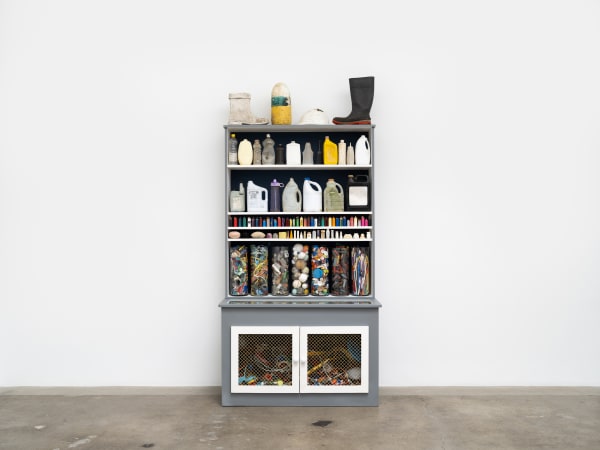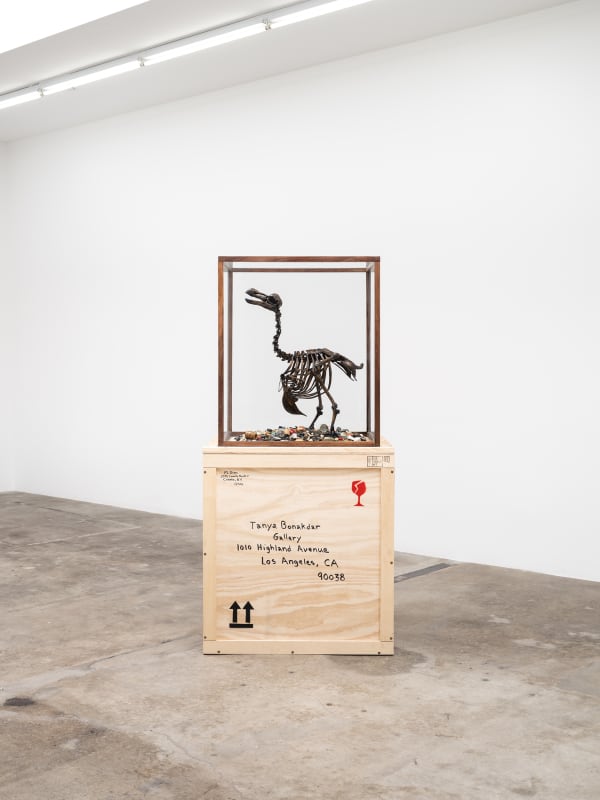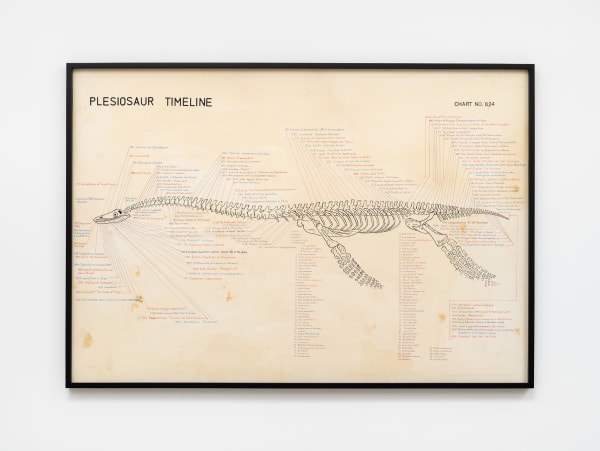Tanya Bonakdar Gallery is pleased to present Mark Dion: Theater of Extinction, an exhibition of new sculpture and drawings. Dion has shown with the gallery for over two decades, but this will be the artist’s first solo presentation in the Los Angeles space. The exhibition will include four new sculptural works and over a dozen new drawings, some among the largest Dion has produced to date.
Mark Dion uses his work to investigate systems of knowledge production and presentation, and to critique the underlying assumptions that determine how disciplines like science, geography, and art classify, organize, and display information. His large-scale installations and sculptural works often mirror the strategies and aesthetics of academic methodology or museum display, and they prompt viewers to consider how these institutions frame our understanding of the material presented, pointing to the social rather than innate construction of knowledge. To deconstruct the notion that the logic comprising these systems is immutable and authoritative, Dion often inserts irrational elements or other non sequiturs into the works, subverting the seemingly rational picture they present.
Dion’s method involves immersing himself in the classification systems and practices used by natural history museums, biologists, naturalists, curators and explorers and closely observing local environs to create installations that are situated within a particular place, discipline, or cultural paradigm. His study of scientists, the natural world, and geography has frequently led Dion to consider the environment and environmentalism. These issues have always been important to the artist, and as they have increasingly been featured in his works, he chose to explore the theme of extinction in this exhibition. Many works presented depict animals and plants of both past and present that are endangered or have disappeared entirely; others more generally address the degradation of the environment, which is a major factor in whether these species have the ability to survive or perish.
At the center of the exhibition, two large cabinet installations present various objects in symmetrical, visually pleasing schemes that resemble the Wunderkammer, or cabinet of curiosities, a common format used in early modern Europe to display heterogeneous collections of valued objects. The massive Cabinet of Extinction frames models of animals or animal parts (skulls, tusks, teeth) in individual cubbies, purporting to exhibit a level of detail reminiscent of a natural history museum. However, the scale of the animal models is off, notably with the inclusion of a tiny dinosaur and mastodon, as well as a rhinoceros that is not scientifically accurate, but rather depicts the animal as found in a well-known woodcut print by Durer. The Cabinet of Marine Debris likewise presents a meticulously organized collection of what might appear to be precious objects but are actually detritus and inconsequential items found discarded on the beach and in the ocean.
Two smaller sculptures, Dodo – Anatomy of Melancholy and Tar and Feathers - Flamingo, link collecting and consumerism by suggesting how these human actions impact extinction through their effects on the environment. Each animal sits atop a hoard of trinkets, a collection of sorts, but the creatures are depicted either in death or distress. The skeletal dodo, a species that long ago disappeared from the earth, and the tar-covered flamingo, whose dark and sticky coating recalls news photos of wildlife suffering in the wake of an oil spill, are both majestic and tragic, and their glittery collections are poignantly absurd.
While drawing has always been an important part of Dion’s practice, the restrictions on travel over the past two years have required the artist to cut back on his explorations, field work, and off-site installations, and to spend more time in his studio, allowing him to devote more time to drawing. The resulting works on paper take up more space, both conceptually and materially; Plesiosaur Timeline is a masterwork of grand scale, and the expansive span of the paper mirrors the large size of the creature depicted and the extensive set of annotation labels. Mapping a series of historical events onto the physical body of the plesiosaur, this timeline format is a development that Dion attributes to the period where he spent longer continuous spans of time creating works on paper.
While many of the drawings in the show include components that appear scientific and logical, there is rarely a specific factual connection between the labels and the diagrams. Instead, an allegorical logic may apply, or in some cases viewers may strain to impose a logic where there is none at all. Inspired by surrealism, Dion pairs terms and images intuitively, leading to some surprising, thought-provoking, but often wholly illogical connections. These incongruities can be whimsical or darkly comic; the vertical column of outlined figures in The Sea, includes not only the expected fish and sharks but also household items, a plastic water bottle, and a missile. The drawings are earnest but mischievous, and Dion has said he likes to think of them as having been “produced by an unreliable taxonomist.”
Mark Dion is currently the artist in residence at the La Brea Tar Pits, part of the Natural History Museums of Los Angeles County. His residency will culminate in a site-specific installation that has been commissioned for the 2024 iteration of the Getty Foundation’s exhibition series Pacific Standard Time, which explores the intersection of science and art.
Mark Dion was born in New Bedford, MA, in 1961, and he lives and works in Copake, NY. He has been the subject of numerous solo exhibitions worldwide, including those at Storm King Sculpture Park (2019), the Whitechapel Gallery, London (2018), the ICA Boston (2017), the Academy of Fine Arts Design, Dresden (2014), and the Miami Art Museum (2006). Dion has also presented major site-specific installations, such as the Tate Thames Dig at Tate Gallery, London (1999), Rescue Archeology at the Museum of Modern Art, New York (2004), Oceanomania at the Musée Oceanographic de Monaco (2011), and The Field Station of the Melancholy Marine Biologist, a long-term installation currently on view on Governor’s Island in New York City.
All installation images above: Photo by Ruben Diaz
-
 Mark Dion, Cabinet of Extinction, 2022
Mark Dion, Cabinet of Extinction, 2022 -
 Mark Dion, Cabinet of Extinction, 2021
Mark Dion, Cabinet of Extinction, 2021 -
 Mark Dion, Cabinet of Marine Debris – East Coast/West Coast, 2022
Mark Dion, Cabinet of Marine Debris – East Coast/West Coast, 2022 -
 Mark Dion, The Anatomy of Melancholy - Dodo, 2021
Mark Dion, The Anatomy of Melancholy - Dodo, 2021 -
 Mark Dion, Dodo - Anatomy of Melancholy, 2022
Mark Dion, Dodo - Anatomy of Melancholy, 2022 -
 Mark Dion, Plesiosaur Timeline, 2020
Mark Dion, Plesiosaur Timeline, 2020 -
 Mark Dion, Tar and Feathers - Flamingo, 2019
Mark Dion, Tar and Feathers - Flamingo, 2019 -
 Mark Dion, Extinction Vortex, 2021
Mark Dion, Extinction Vortex, 2021 -
 Mark Dion, Mobile Ranger Library - Komodo National Park, 2005
Mark Dion, Mobile Ranger Library - Komodo National Park, 2005 -
 Mark Dion, Notable Bird Beaks of American Museum History, 2020
Mark Dion, Notable Bird Beaks of American Museum History, 2020 -
 Mark Dion, Pterodactyl, 2021
Mark Dion, Pterodactyl, 2021
